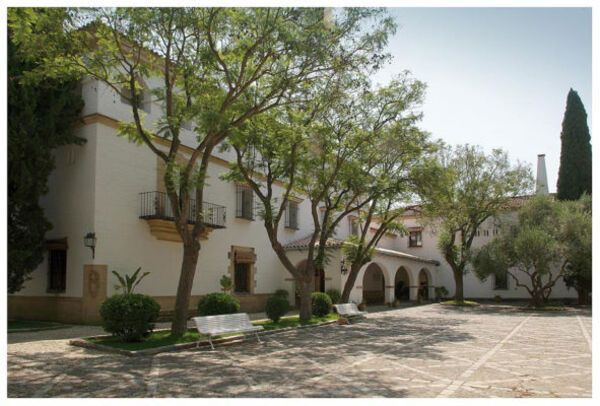Doctor Alba María Sillero says that, when she was a first-year resident doctor, she received a patient in the emergency room and, after examining her, prescribed painkillers for the severe pain she felt in her shoulder. Out of prudence, she consulted another doctor and he, after assessing the case, decided that the patient should be admitted. Hours later, tests revealed a fatal diagnosis: she had severe, advanced cancer.
The doctor had to attend to the patient and her family the following day and during the following weeks. Urged by her early diagnosis, she reconsidered about the best way to care for them, for which she remembered advice from her profession and some teachings of Saint Josemaría applicable to her work: finishing each task well, treating all people with love, praying for patients and their families, bringing them warmth and comfort in difficult times… This is how she tried to do it, going so far as to express to that patient that she was praying for her and his healing. However, due to the aggressiveness of the disease, the patient died after several weeks.
Three years later, in the same hospital where she continued to work, another patient suddenly approached her, asked if she remembered her and identified herself as the daughter of that cancer-stricken woman: “You took care of my mother when she was admitted . I want to thank you for how you took care of her, because she died very peaceful knowing that you were praying for her. God works through you.”
Alba Sillero is a doctor specializing in palliative care and Enrique Garcia Maiquez He is a poet and columnist. On November 30, the two engaged in a public conversation in the auditorium of the Cajasol Foundation, in Jerez, on “The influence of the spirituality of work according to Saint Josemaría”, moderated by the journalist and media coach Eugenio Camacho. The reason he brought them together was the commemoration of the 50th anniversary of the gatherings of Saint Josemaría in the retreat house Pozoalberolocated on the outskirts of the city.
For the doctor, “learning to sanctify work changed the perspective of my life and my occupations. I had been building a life independent of God because I thought that I had no place in my task as a doctor, but a friend explained to me that work can be sanctified, that I could find God in my work and in my ordinary life”. Alba concludes that now her work makes even more sense, “because with a Christian perspective I can help many patients by giving them the care they need and bringing them God’s comfort at the end of their lives. This way of doing things changes people, even if you don’t want to and even if you don’t want to”.
For his part, Enrique García Máiquez is a poet, high school teacher, literary critic and columnist in various media. In his speech, he highlighted and explained some of the teachings learned from Saint Josemaría that influence the way he deals with his work.
He highlighted among all of them the necessary professionalism that the job must have so that it may be pleasing to God; the unit of life that should preside over all tasks; personal freedom and the consequent responsibility with which each one has to make his own decisions; the examination of conscience that makes him reconsider his way of living and working; the use of time for the glory of God, and respect for all people no matter how distant they are from one’s positions.
The event, which brought together almost two hundred people, also included the screening of the report “The footprint of a saint. Catechesis of Saint Josemaría in Andalusia”edited by the production company Betafilms.
A painting of the Virgin of Guadalupe and another of Saint Josemaría
Two days later, the Bishop of Asidonia-Jerez, Mr. José Rico Pavés, presided over the Eucharist in the Cathedral of Jerez, at the end of which two paintings were blessed: one of the Virgin of Guadalupe, and the other of Saint Josemaría.
Both paintings are the work of the Mexican painter based in Valencia, Jose Antonio Ochoa. The painting represents Saint Josemaría standing praying the rosary, and the paintings have been placed in the chapel dedicated to Saint John Paul II, right at the entrance to the Chapel of the Blessed Sacrament.

In his homily, Mr. José Rico Pavés commented on the liturgical season of Advent as a preparation for the coming of the Lord, which is precisely what Saint Josemaría sought with his life and his pastoral work: “to promote a personal encounter with Jesus Christ, teach many people to encounter Jesus Christ in their work and in his ordinary life. At the bottom of the painting, the painter has collected a phrase from Saint Josemaría that seeks to reflect this commitment of the saint to know and make Jesus Christ known: “May I see with your eyes, my Christ!”
For one of the promoters of this proposal, Ángel Heredia, “Jerez once again has the presence of Saint Josemaría among us, which will allow many people to evoke his visits to Jerez and, for others, to take an interest in those unforgettable gatherings in Pozoalbero” , which the writer José María Pemán recounted with such literary beauty in a Press articleexpressing how God always seeks the collaboration of man in his plan of salvation, looks for second causes in people to do the good that He wants to do through them, and had found in Saint Josemaría a second cause “that had come out of him! first class!”

